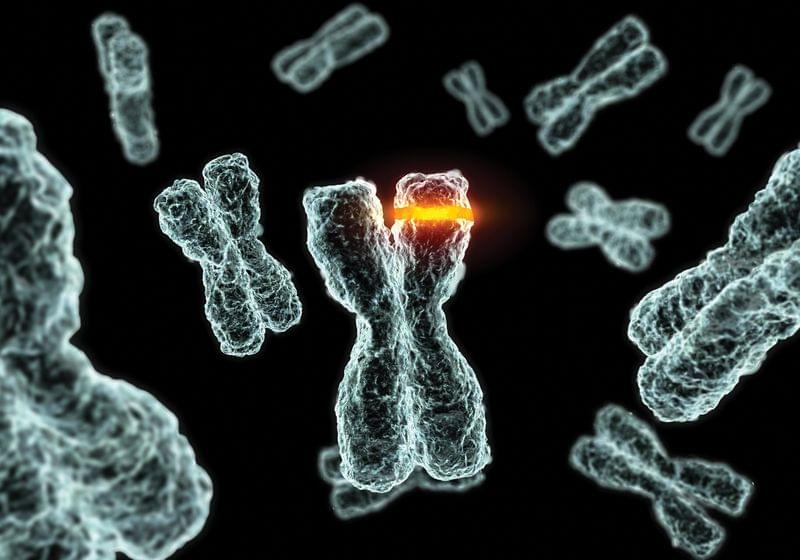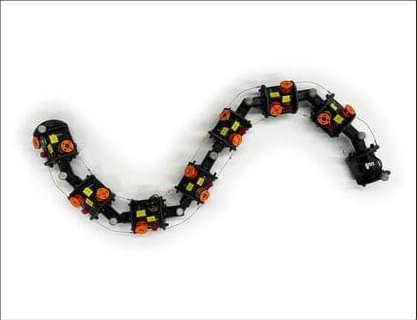Page 940
Since the technique was first published in 2019, prime editing has grown with lightning speed, alongside hopes for what it can achieve.
Dec 22, 2023
Researchers from Indiana University Unveil ‘Brainoware’: A Cutting-Edge Artificial Intelligence Technology Inspired by Brain Organoids and Silicon Chips
Posted by Dan Breeden in categories: biotech/medical, information science, mathematics, robotics/AI
The fusion of biological principles with technological innovation has resulted in significant advancements in artificial intelligence (AI) through the development of Brainoware. Developed by researchers at Indiana University, Bloomington, this innovative system leverages clusters of lab-raised brain cells to achieve elementary speech recognition and solve mathematical problems.
The crux of this technological leap lies in the cultivation of specialized stem cells that mature into neurons—the fundamental units of the brain. While a typical human brain comprises a staggering 86 billion neurons interconnected extensively, the team managed to engineer a minute organoid, merely a nanometer wide. This tiny but powerful structure was connected to a circuit board through an array of electrodes, allowing machine-learning algorithms to decode responses from the brain tissue.
Termed Brainoware, this amalgamation of biological neurons and computational circuits exhibited remarkable capabilities after a brief training period. It was discerned between eight subjects based on their diverse pronunciation of vowels with an accuracy rate of 78%. Impressively, Brainoware outperformed artificial networks in predicting the Henon map, a complex mathematical construct within chaotic dynamics.
Dec 22, 2023
Mechanical intelligence simplifies control in terrestrial limbless locomotion
Posted by Dan Breeden in categories: biological, robotics/AI
To advance our overall understanding and discover principles of mechanical intelligence in limbless locomotion and to understand the potential role of bilateral actuation specifically in mechanical control, we took a comparative biological and robophysical approach using two complementary models: a biological model, the nematode C. elegans, and a robophysical model, a limbless robot incorporating a bilateral actuation scheme that permits programmable, dynamic, and quantifiable body compliance (Fig. 1B). This compliance governs the passive body-environment interactions in the horizontal plane that allow mechanical intelligence. Because separating neural and mechanical aspects of control is challenging in a freely locomoting living system, we used the robot as a model (22, 24, 49, 50) that then allowed mechanical intelligence to be isolated from active controls and to be systematically tuned and tested.
Using comparisons between the kinematics and locomotor performance of our biological and robophysical models, we show that mechanical intelligence alone is sufficient for an open-loop limbless robot to reproduce locomotory behavior of nematodes. Mechanical intelligence simplifies controls in terrestrial limbless locomotion by taking advantage of passive body-environment interactions that enable heterogeneity negotiation, thereby stabilizing locomotion. Further, we show that a simple active behavior inspired by nematodes takes advantage of mechanical intelligence to enhance locomotion performance even further. Our method and results not only provide insight into the functional mechanism of mechanical intelligence in organismal limbless locomotion but also provide an alternative paradigm for limbless robot development that simplifies control in complex environments.
Dec 22, 2023
Using ‘waste’ product from recent NASA research, scientists create transformative nanomaterials
Posted by Dan Breeden in categories: chemistry, energy, nanotechnology, physics, space, sustainability
Researchers at the University of Sussex have discovered the transformative potential of Martian nanomaterials, potentially opening the door to sustainable habitation on the red planet.
Using resources and techniques currently applied on the International Space Station and by NASA, Dr. Conor Boland, a Lecturer in Materials Physics at the University of Sussex, led a research group that investigated the potential of nanomaterials—incredibly tiny components thousands of times smaller than a human hair —for clean energy production and building materials on Mars.
Taking what was considered a waste product by NASA and applying only sustainable production methods, including water-based chemistry and low-energy processes, the researchers have successfully identified electrical properties within gypsum nanomaterials—opening the door to potential clean energy and sustainable technology production on Mars.
Dec 22, 2023
Research explores cell-based theory of consciousness and what it entails
Posted by Dan Breeden in category: neuroscience
Humans and other animals with brains perhaps aren’t the only beings on the planet to experience consciousness, says a study in the journal EMBO Reports.
Consciousness instead underpins all life forms, from the smallest cells to the most complex organisms. Far from being limited to creatures like ourselves, the cell-based theory of consciousness frames the phenomenon a fundamental part of life itself.
Conventional thinking about consciousness—called the standard model of consciousness—focuses on the brain, supposing only complex organisms like humans and animals have it. But the new cell-based theory argues that consciousness started with the very first cells that emerged about 3.8 billion years ago and plants, bacteria and even amoebas have it.
Dec 22, 2023
New, DNA-Dependent Gene Editing Technology Could Shift the Paradigm of Precise Editing
Posted by Dan Breeden in categories: bioengineering, biotech/medical, chemistry
For instance, the pegRNA molecules used in prime editing are difficult and expensive to chemically synthesise or laborious to clone, which hampers the crucial optimisation of prime-editing efficiency. Additionally, the reverse transcriptase (RT) enzymes used in prime editing are relatively error-prone and have low processivity, which may limit the precision and size of edits that can be introduced. Furthermore, RTs have a low affinity for dNTPs, which can impact prime-editing efficiency in non-dividing and differentiated cells.
To address these issues, two research groups led by Dr. Ben Kleinstiver at Mass General Hospital (MGH) & Harvard Medical School, and Dr. Erik Sontheimer at the RNA Therapeutics Institute (UMass Chan Medical School) have independently developed new approaches that build upon prime editing by replacing RT with another type of enzyme, namely a DNA-dependent DNA polymerase. This change permits the use of DNA instead of RNA as a template for editing, potentially addressing some of the main limitations of prime editing by allowing higher efficiency and adaptability.
Dec 22, 2023
10 Ways the Universe Might Catastrophically End
Posted by Dan Breeden in category: space

An exploration of ten possible ways the universe could come to an end. My Patreon Page: https://www.patreon.com/johnmichaelgodierMy Event Horizon Channel: http…
Dec 22, 2023
Chinese Spacecraft Emitting Strong Signal Over North America
Posted by Joseph Barney in category: space
Interesting read. Are they spying on the West Coast or just running experiments? That’s a good space plane at the very least. 3 launches in 3 years.
Earlier this week, China’s top-secret spaceplane, dubbed Shenlong released six mysterious objects after reaching the Earth’s orbit for the third time in three years.
We can only hazard a guess as to what these objects — which are being tracked by the US Space Force and designated the names OBJECT A through F by the US Department of Defense — are, or what their purpose is.
Continue reading “Chinese Spacecraft Emitting Strong Signal Over North America” »
















